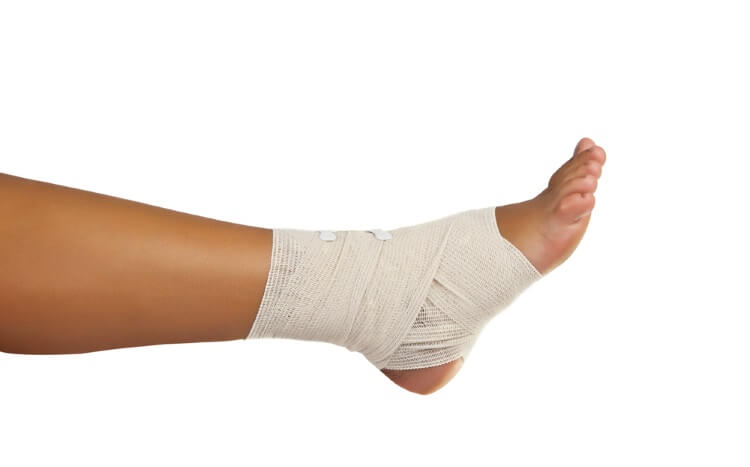 A lot of people ignore sprains and hobble about their normal, daily business without adequately caring for them and that’s a mistake. While sprains aren’t serious, they do demand your care and attention. You don’t even need to come see me. You can manage a sprain with self-care.
A lot of people ignore sprains and hobble about their normal, daily business without adequately caring for them and that’s a mistake. While sprains aren’t serious, they do demand your care and attention. You don’t even need to come see me. You can manage a sprain with self-care.
What’s a sprain, anyhow?
Ligaments are what give your joints stability. They wrap around them and keep them in place. While ligaments are somewhat elastic, push them too far and you’ll be in trouble.
Sprains are what happens when you push your normally resilient, tough ligaments over the edge of what they’re designed to do. They get damaged and inflamed, causing pain. A sprain usually persists for 6 weeks, but if you want it to end there (and not become a chronic problem), you need to care for the sprain.
Rest
This part isn’t just tough for active people. It’s tough for everyone, especially if they’ve strained a joint they use at work. But it’s necessary to give the sprain time to resolve. A minor sprain needs only a couple of days until you’re good to go. A little more time is required for a more acute sprain.
While you can still get around, avoid using the affected joint to do anything strenuous – even sweeping the floor. It’ll keep.
Ice, ice baby
Ice is a sprain’s best friend. Getting ice on the affected joint as soon as you can well stop it from swelling and ease the pain by numbing it.
Use either cubed or crushed ice in a zip lock bag, wrapped in a lightweight towel. If you have no ice available, try frozen vegetables or something else in your ice box. Stopping the swelling will also stop fluids from accumulating in the joint.
The pro’s answer to ice is the gel pack. These can be kept in the freezer, so you’re ready for anything. You can find them at sporting goods or drugstores. They’re flexible and get even colder than ice when frozen. Use a gel pack for no more than a quarter of an hour at a time.
Wrap it
Tensor bandages are readily available at your local drugstore. Wrap the effected joint. This will limit movement, helping it to heal.
Be sure not to wrap the bandage too tight. Slip your finger underneath the bandage. It should fit snugly between your skin and the bandage. You don’t want to cut off or limit circulation – only the joint’s full range of motion.
Elevate
As often as possible, elevate the affected joint. This will serve lymphatic drainage and keep swelling to a minimum. A sprained wrist should be elevated above chest level, whereas a sprained ankle can be propped up on a chair or ottoman, with a pillow or two underneath the knee.
Elevate the sprain for at least two days following injury. This is the initial healing phase and probably the most crucial.
Moderate exercise
As soon as you can, you should be engaging in range of motion exercises to keep the joint supple.
Got pain? Contact me to set up a consultation.









